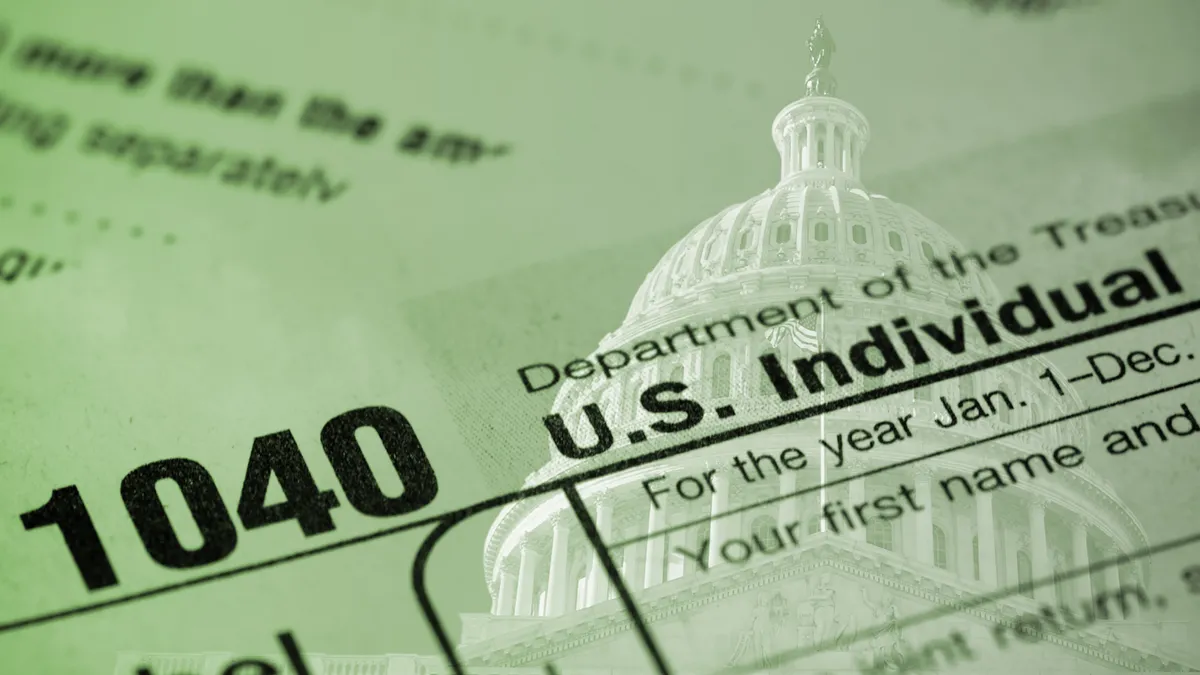Dive Brief:
-
Utilities could face credit problems and reduced cash flows under the new, lower corporate tax rate, according to analysts.
-
A new report from The Brattle Group notes that regulatory proceedings are already under way in about half the states in the nation that aim to pass the tax cuts on to ratepayers, but those cuts could also weaken the credit profile of some utilities.
-
Underscoring the threat tax cuts pose to utilities, a Moody’s Investors Service report last week warned that tax reform is credit negative for utilities.
Dive Insight:
The effects of the new lower corporate tax rate – 21% versus 35% previously – signed into law by President Donald Trump just before Christmas are proving to be a double-edged sword for utilities.
In a new analysis, The Brattle Group said the tax cuts could provide benefits for utility customers, but they also warned the cuts could lead to “unrealistic expectations," overshadowing some important off-setting effects.
Taxes are one of the costs that regulators allow utilities to pass on to customers. So, lower taxes generally translate into lower rates for customers. That effect will be passed on to customers in two ways.
First, utilities will have to set aside less money for their tax bill and that reduction will be passed on to customers immediately. Second, because utilities have put aside funds to pay future tax bills based on a 35% tax rate, many have put aside too much money. The treatment of accumulated deferred income taxes (ADIT) associated with accumulated deferred income taxes from past years is the subject of regulatory proceedings now under way in about 24 states. How regulators handle those cases remains to be seen, but it is likely to have an effect on the cash flows of many utilities.
Utility customers stand to benefit from the immediate effect of lower taxes and the repayment of deferred taxes, which will likely show up as lower rates on their bills, but in both instances the lower tax rate will also reduce utility cash flow, which is one of the critical metrics that rating agencies look at when assessing creditworthiness.
Returning tax savings to customers does not pose a “threat to the fundamental value” of a utility and will not necessarily affect “book return on equity or the present value of future cash flows, but it does create a near-term cash flow problem,” Robert Mudge, a principal at The Brattle Group and one of the authors of the report, told Utility Dive.
In the first instance, the cut in the tax rate constrains cash flow by narrowing difference between taxes for accounting and ratemaking purposes, or “book” taxes, and the amount of “cash” taxes a utility pays.
In the second instance, the money collected from a utility's deferred taxes will likely be returned to customers in the form of lower rates, which would mean that less revenue would be flowing into the utility.
In its report, Moody’s estimates that the changes in tax laws will dilute a utility’s ratio of cash flow before changes in working capital to debt by approximately 150 to 250 basis points on average, depending to some degree on the size of the company’s capital expenditure program.
As Moody’s explains it, regulated utilities operating in cost-plus model pass tax payments to customers. In practice, however, they collect revenues from customers based on book tax expense but typically pay much less tax in cash.
Under the new tax law, utilities will collect less revenue to cover tax expenses and pay out more cash tax, squeezing cash flows. The net effect is that utilities will collect about 40% less tax-related revenue. Even though those funds are eventually paid out, there was a value in putting them into a deferred tax account. Those accounts will now be smaller.
The tax law also cuts bonus depreciation, which shields the taxes a company has to pay. The loss of bonus depreciation means that utilities can claim less in depreciation expenses and will, therefore, have higher taxable income. Moody’s expects utilities to pay little or no cash tax in 2018 because most have accumulated net operating losses from past bonus depreciation claims.
The result is what Moody’s sees as “significant credit deterioration for many utilities,” particularly those that already have weakening financial projections such as American Electric Power, Consolidated Edison, Dominion Energy, Duke Energy, Entergy and Southern Co.
The Brattle report notes that the magnitude of these effects will vary from utility to utility. For some utilities, it may be enough to adjust their capital structure or to increase their cost of equity, which would partly reduce rate reductions. But there also could be other ways to handle the tax savings, says Mudge.
Rather than a simple rate reduction, a utility could use some of the funds to accelerate book depreciation of power plants that are already at risk, thus allowing for earlier retirement. Or the savings could be used to fund initiatives such as customer education programs or EV charging stations.














